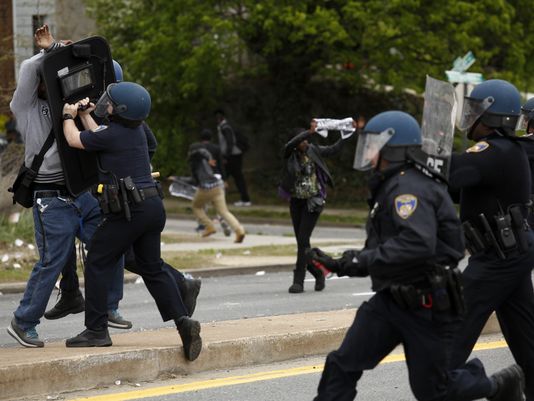
This week, Baltimore made headlines as riots erupted following the funeral of Freddie Gray. The riots have put a spotlight on the cruel reality lived by low-income communities in Baltimore, not to mention the level of “incomprehensible” violence that is part of everyday life for many Baltimoreans. For those of us in Washington, D.C., it is difficult to wrap our heads around the idea that a city that has been ranked #36 in the world’s most violent cities could only be a one-hour car drive away—that’s 40 miles from the capital of the United States. 36 is one spot above Juárez, Mexico, and one below Medellin, Colombia.
Many seek answers to how Baltimore can best address the problems that have been plaguing it for so long. In her policy speech on Wednesday, Hillary Clinton called for the reform of the criminal justice system “to end the era of mass incarceration” of African-Americans. She also made a call to make mental health a priority—an issue that Clinton has declared as one of her areas of focus in her campaign for presidency. Realizing the connection between mental health and violence is not a new discovery, or at least it should not be treated as such.
Colombia is a country that has experienced its fair share of armed internal violence. In fact, a number of its cities are considered among the top 50 most violent in the world. The conflict between the government and paramilitary groups on the one hand, and guerrillas on the other, spurred a level of violence that has historically defined the country. Plagued by decades of civil war, the country became divided, and disappearances, massacres, and rape became common occurrences, especially in rural communities where most of the violence took place. From this experience, courts have made important contributions to better understanding violence and remedying victims.
In 2010, the Constitutional Court of Colombia issued an important decision in the case T-045/10, also known as “Caso El Salado” on this very issue and whose analysis draws key conclusions on the needs of victims of violence. The petitioners were three women who escaped the massacres perpetrated in their communities by either paramilitary or guerrilla groups and who claimed that they had not received proper medical care thereafter, including mental health care. The Court held that victims of internal conflicts must be granted greater constitutional protection based on their status of vulnerability. The Court emphasized the negative impact that violence can have on a person’s mental health and the fact that the victim is, as a result, subjected to a special state of vulnerability. Recalling the right to health and the victim’s entitlement to health care services, especially as victims of violence, the Court ultimately ordered the government to provide the victims what they had requested: psychological and psychiatric care.
Since the riots began in Baltimore, public schools closed and curfews were imposed. The problems are complex and they have also existed for many years. Close to 24% of Baltimore’s population lives below the poverty line, with 35% of children living below the poverty line and 61% living in low-income households earning less than two times the poverty level. It is a city where socio-economic inequality is prominent and where people live in deplorable conditions—a reality that cannot be justified for a city located in one of the wealthiest countries in the world.
As such, the Colombian Constitutional Court’s understanding and analysis of the circumstances faced in communities subjected to violence can help set the framework for interventions that should be taken in Baltimore. Human dignity is central to the Court’s decision. In fact, its analysis is primarily, if not completely, founded on the fundamental rights guaranteed by Colombia’s Constitution. The Court sets as the government’s objectives to promote conditions necessary for living a dignified life and solutions to social inequality in order to establish justice. According to the Colombian Court, the government bears the obligation to enable the inclusion and participation of vulnerable, marginalized, and “weak” sectors in the “economic and social life of the nation,” as well as the obligation to foster the “progressive improvement and material living conditions in the most vulnerable sectors of society.”
Additionally, the Court’s perspective is in line with what the World Health Organization’s (WHO) explanation that “[m]ental health and mental illnesses are determined by multiple and interacting social, psychological, and biological factors, just as health and illness in general” and that “[t]he greater vulnerability of disadvantaged people in each community to mental illnesses may be explained by such factors as the experience of insecurity and hopelessness, rapid social change, and the risks of violence and physical ill-health.” Moreover, regarding the concerns over the prevalence of mental illness in Baltimore low-income communities, the WHO has also indicated that “the clearest evidence for this relates to the risk of mental illnesses, which in the developed and developing world is associated with indicators of poverty, including low levels of education, and in some studies with poor housing and low income.”
Therefore, when we think of Baltimore and what must be done to break the cycle of violence, there needs to be an understanding that the affected communities require special protection, that they are in a special status of vulnerability, and that underlying any intervention, basic human dignity must always be at the forefront.



